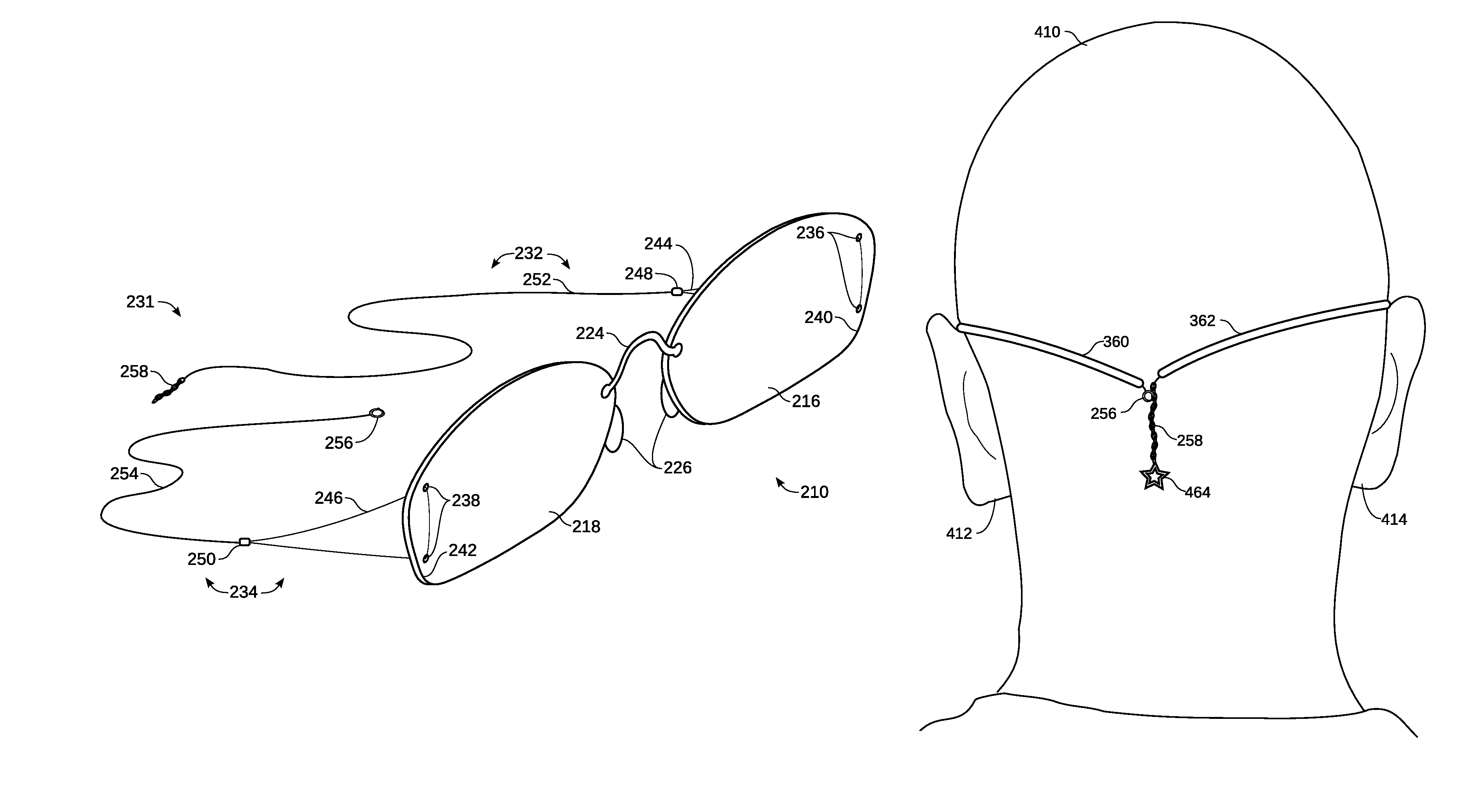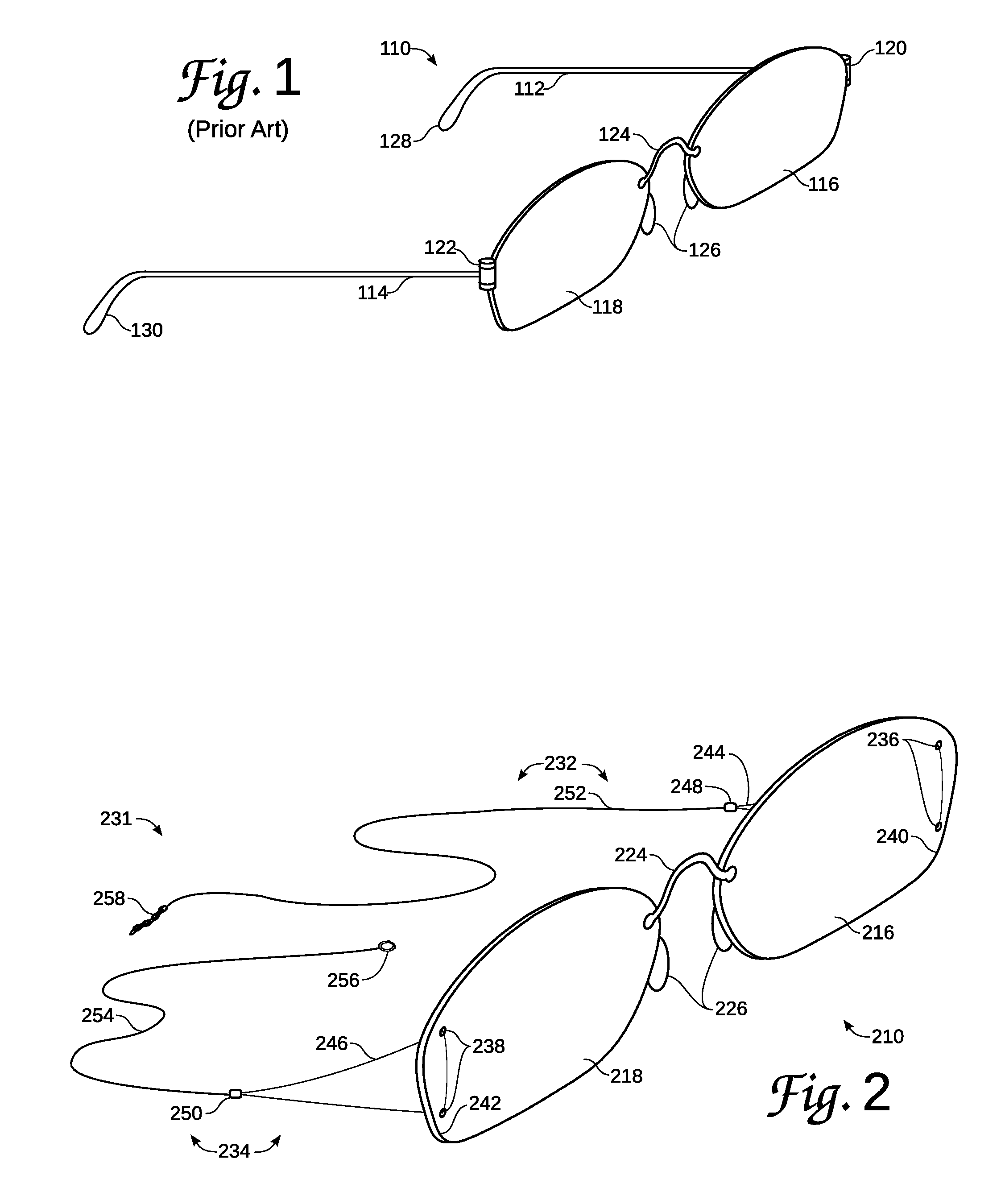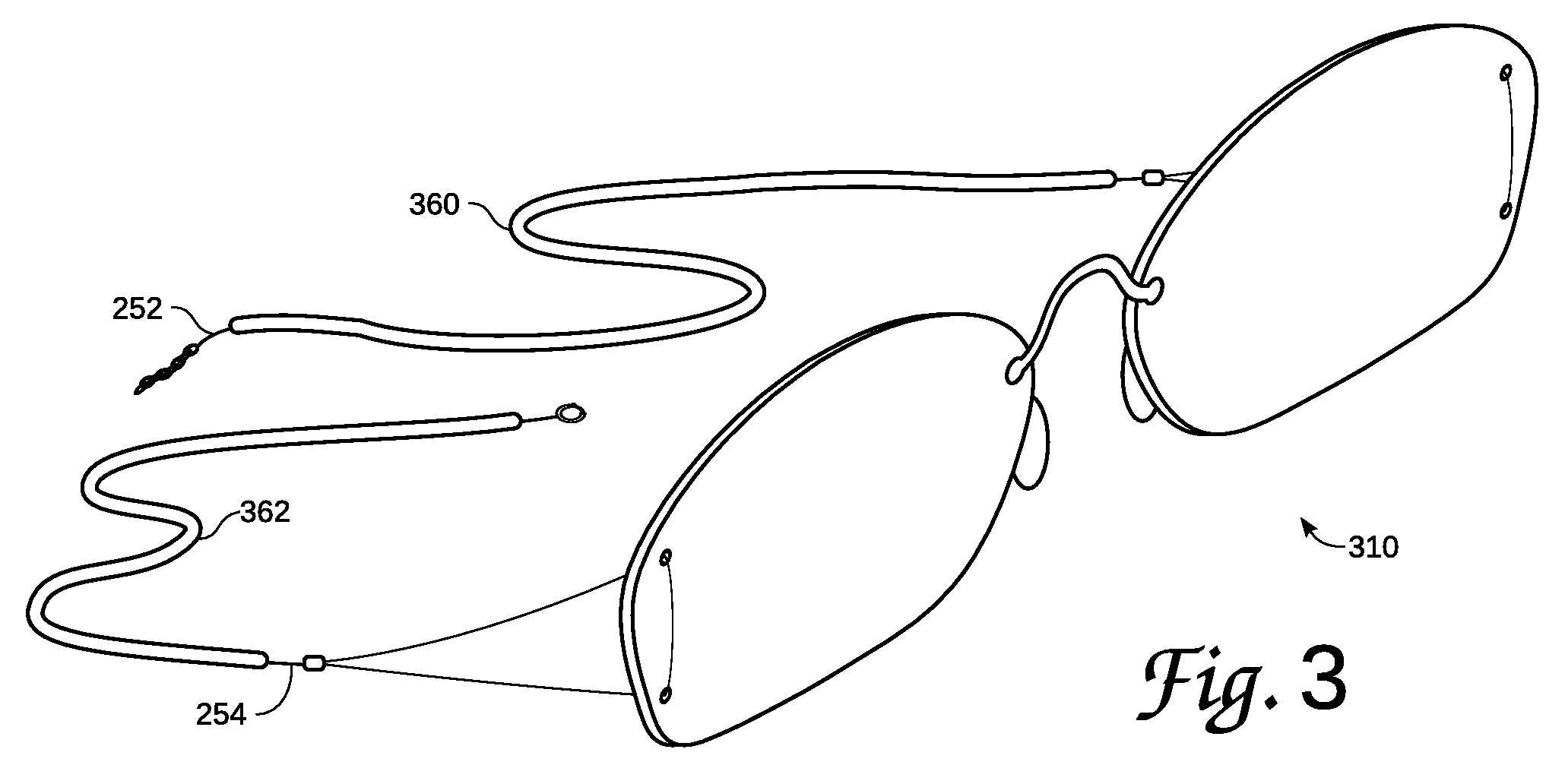Temple-bar-less eyeglasses
a technology of eyeglasses and temple bars, which is applied in the field of eyeglasses, can solve the problems of irritating the wearer's skin, affecting the wearer's vision, and the construction is relatively complex and expensive, and achieves the effects of being easily ornamented to the desires and whims of the wearer, being highly resistant to damage or breakage, and being light in weigh
- Summary
- Abstract
- Description
- Claims
- Application Information
AI Technical Summary
Benefits of technology
Problems solved by technology
Method used
Image
Examples
Embodiment Construction
[0022]The invention is described below, with reference to detailed illustrative embodiments. It will be apparent that a system according to the invention may be embodied in a wide variety of forms. Consequently, the specific structural and functional details disclosed herein are representative and do not limit the scope of the invention.
[0023]As set forth above in the Background of the Invention, traditional eyeglasses are depicted in FIG. 1. By way of comparison and contrast, an exemplary embodiment of temple-bar-less eyeglasses 210 according to the invention is illustrated in FIG. 2.
[0024]Several components are similar between the traditional eyeglasses 110 and the temple-bar-less eyeglasses 210. Two lenses 216 and 218 are similar to those in the traditional eyeglasses 110, as are the nose bridge 224 and the nose pads 226.
[0025]As in traditional eyeglasses, the lenses 216 and 218 are fabricated in a traditional manner from standard materials used for eyeglass lenses, such as CR-39...
PUM
 Login to View More
Login to View More Abstract
Description
Claims
Application Information
 Login to View More
Login to View More - R&D
- Intellectual Property
- Life Sciences
- Materials
- Tech Scout
- Unparalleled Data Quality
- Higher Quality Content
- 60% Fewer Hallucinations
Browse by: Latest US Patents, China's latest patents, Technical Efficacy Thesaurus, Application Domain, Technology Topic, Popular Technical Reports.
© 2025 PatSnap. All rights reserved.Legal|Privacy policy|Modern Slavery Act Transparency Statement|Sitemap|About US| Contact US: help@patsnap.com



